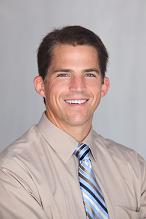 Samuel Young, MD, is board-certified in orthopedics and sports medicine. In 2010, Dr. Young founded his private practice, Young Orthopaedics and Sports Medicine in Jacksonville, Fla. He earned his medical degree from the University of Texas – Southwestern Medical School at Dallas. He completed his orthopedic surgery residency at the University of Pennsylvania in Philadelphia and completed his fellowship training at Duke University in Durham, N.C.
Samuel Young, MD, is board-certified in orthopedics and sports medicine. In 2010, Dr. Young founded his private practice, Young Orthopaedics and Sports Medicine in Jacksonville, Fla. He earned his medical degree from the University of Texas – Southwestern Medical School at Dallas. He completed his orthopedic surgery residency at the University of Pennsylvania in Philadelphia and completed his fellowship training at Duke University in Durham, N.C. Here he discusses continuing his education, keeping up with technology and facing the rising tide of healthcare reform.
Q: What attracted you to the field of orthopedics?
Dr. Samuel Young: Orthopedic surgeons, including myself, tend to be action-oriented individuals. That is to say, we like to make decisions and affect changes that directly impact an outcome. When the musculoskeletal system is injured, there is typically a specific alteration of the normal anatomy that needs to be corrected. In most instances, we can either fix or protect the injured anatomy and allow nature to take its course. The expected result is healing and a normal return of function often within six months. For action-oriented individuals, this is tremendously satisfying. In contrast, many physicians in fields other than orthopedics treat chronic conditions that require medicinal management; positive results are much slower and less obvious if they occur at all.
Q: How will arthroscopy change over the next five to 10 years?
SY: Arthroscopy has advanced tremendously over the past few decades. Its use is being expanded to more and more as time progresses. Arthroscopy of the hip and elbow was relatively limited when I began my training in 2000. We were limited to procedures for diagnosing conditions and debriding minor damage. Ten years later, we are performing major repairs in the hip and fixing fractures and tears in the elbow routinely. Arthroscopy to fix rotator cuff tears of the shoulder was very controversial in the early 2000s. Now, it is the standard of care. The advancement in arthroscopy is only limited by imagination and then technology. In other words, we will continue to advance the discipline by stretching the limits of our imagination. Industry will respond by producing new products to allow us to take the next step in restoring joints to their health.
Q: What have you done to keep up with rapidly changing technology in the healthcare industry?
SY: I am active in several orthopedic societies including the American Association of Orthopaedic Surgeons, American Orthopaedic Society of Sports Medicine and Arthroscopy Association of North America. These societies offer numerous venues for continued education and material exchange with other practicing orthopedic surgeons and industry executives. In addition, I regularly attend conferences and workshops to advance my knowledge and surgical skills. The American Board of Orthopaedic Surgeons requires practicing orthopedic surgeons to maintain a minimum of 120 hours of continuing medical education per three year period.
Q: What has been the most significant change in orthopedics and sports medicine since you first began to practice?
SY: Other than the technical advancements I previously discussed, the largest shift has been in the evolution of the delivery system of healthcare. When I first began practicing, Health Maintenance Organizations were on the decline and the system was returning towards an individual practice model. Currently, the shift is towards conglomeration again. Individual physician practices are becoming a thing of the past as they are merging with or being acquired by larger healthcare systems and hospitals. Much of this is in response to the Patient Protection and Affordable Care Act (a.k.a. “Obamacare”). As most of our elected officials are uncertain of what changes in healthcare delivery will result from the newly enacted legislation, so much more so, are physicians. This uncertainty leads to financial volatility and an unwillingness to shoulder the risk; ironically, this paradigm shift towards physician employment will likely lead to additional inefficiencies in the delivery of healthcare, accelerate the escalation of the amount of GDP spent on healthcare, and may end up tipping our system over the edge.
Q: What do you still hope to achieve as an orthopedic surgeon?
SY: I am still early in my career as an orthopedic surgeon. I am currently in my own practice. However, if the healthcare delivery system paradigm continues to develop on the current path, then I will likely sell or merge my practice with a larger entity. I am currently studying for an MBA to diversify my qualifications and expand my horizons. Although I love the discipline of orthopedics and am passionate about helping people, the reality is, being a physician is not what it used to be. Most of our time is consumed by paperwork and conflicts with third party providers (e.g. denied insurance claims) that neither challenge nor satisfy us intellectually. I am so frustrated by this, that I might be moved to affect a change and enter the policy arena. Or perhaps I’ll join a large healthcare entity and move with the slow tide towards the edge.
A series of articles featuring orthopedic surgeons on issues ranging from personal background to current research developments is published weekly. We invite all orthopedic surgeons and sports medicine specialists to participate.
If you are interested please email cpallardy@beckershealthcare.com.
More Articles on Sports Medicine:
Team Effort in Orthopedics: Q&A With Dr. Thomas Lardner of Somerset Medical Center
Building a Strong Sports Medicine Program & Online Presence From Scratch: Q&A With Dr. David Geier of MUSC Sports Medicine Program
Technology in the World of Orthopedics: Q&A With Dr. Paul Papierski of MidAmerica Orthopedics


